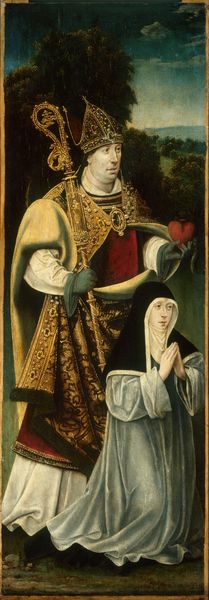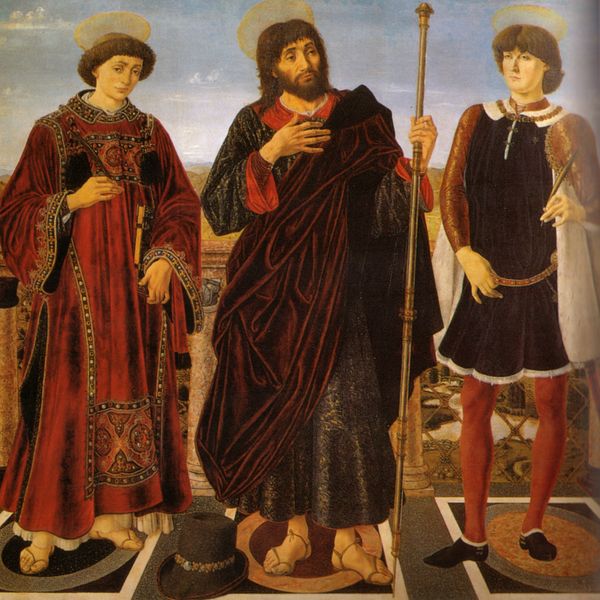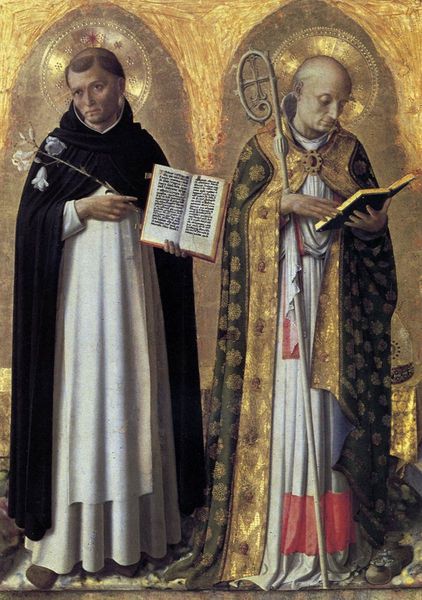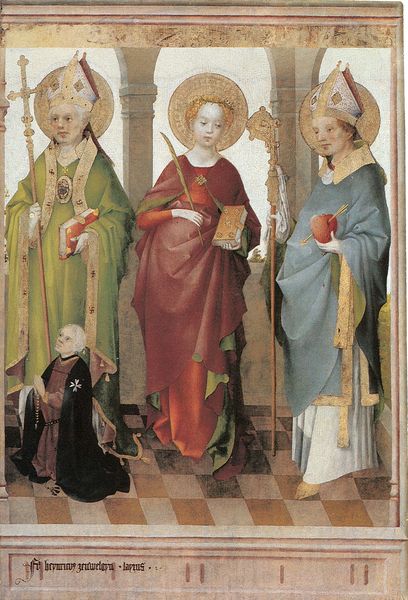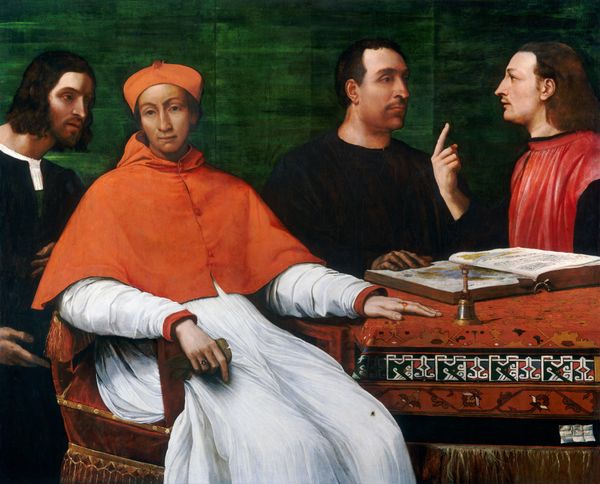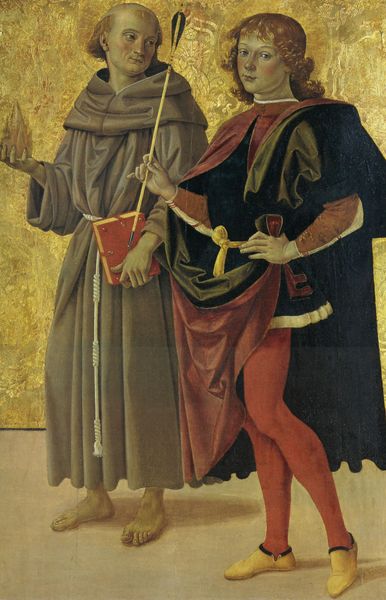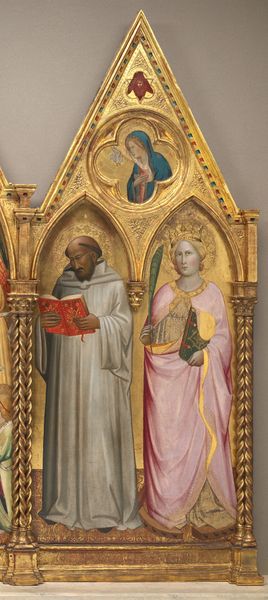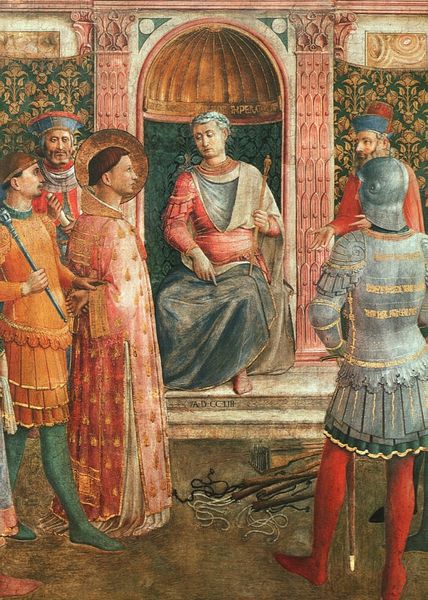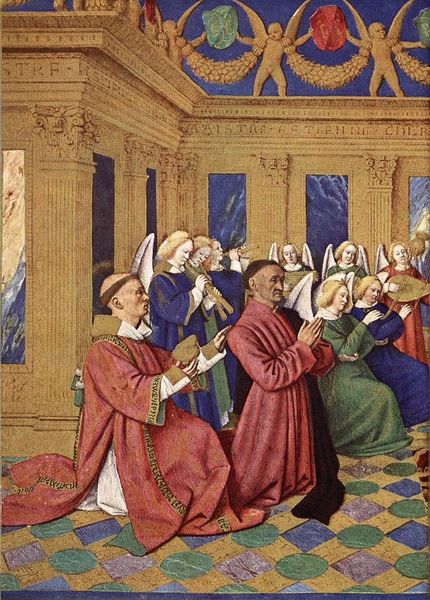
#
portrait
#
portrait subject
#
oil painting
#
portrait reference
#
male-portraits
#
portrait head and shoulder
#
portrait drawing
#
facial portrait
#
portrait art
#
fine art portrait
#
celebrity portrait
#
digital portrait
Dimensions: 93 x 85 cm
Copyright: Public domain
Editor: This is Jean Fouquet’s "Etienne Chevalier with St. Stephen," painted around 1454. The colours are striking; that vivid red robe especially pops out against the cool blues and creams. I also noticed that the background feels so geometric and the portraits, really quite realistic. What jumps out at you in terms of its historical context? Curator: Well, what strikes me is how this portrait functioned within its specific social and political landscape. Consider who Etienne Chevalier was: the treasurer of France under Charles VII. How would a painting like this serve his social standing and political influence? Editor: I guess a portrait like this shows his wealth and power by commissioning Fouquet, who was a renowned artist, and by emphasizing his devotion through the inclusion of Saint Stephen. Does that make sense? Curator: Absolutely. But look closer – even the seemingly pious details play a part. The stone that St. Stephen is holding refers to his martyrdom by stoning, yes, but also, to Chevalier's devoutness, reinforcing his reputation as a righteous figure. How do you think the painting's original location, most likely a church setting, contributed to this message? Editor: If it was in a church, placed with other works like this, the combined effect must have further cemented his family’s and his legacy! It is fascinating to see how the lines between art, faith, and power become so intertwined. Curator: Precisely. This isn’t simply a pretty picture; it is a statement carefully constructed for a particular audience and space. Seeing art through the lens of its political and social implications really enhances our appreciation. Editor: I completely agree. Thinking about how paintings like this operated in their original setting is really valuable. I’ll definitely look at art with a more critical eye toward its public role now.
Comments
No comments
Be the first to comment and join the conversation on the ultimate creative platform.
